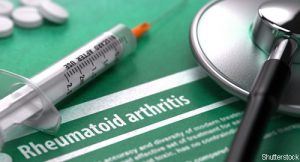 ACR BEYOND LIVE—A moonshot concept in rheumatology has long been centered on the question of whether autoimmune disease can be cured. A less frequently posed inquiry, albeit equally important, is: Can the onset of autoimmune disease be prevented in the first place?
ACR BEYOND LIVE—A moonshot concept in rheumatology has long been centered on the question of whether autoimmune disease can be cured. A less frequently posed inquiry, albeit equally important, is: Can the onset of autoimmune disease be prevented in the first place?
At the 2020 ACR State-of-the-Art Clinical Symposium, Kevin Deane, MD, PhD, associate professor of medicine and William P. Arend Endowed Chair in Rheumatology Research at the University of Colorado Anschutz Medical Campus, Aurora, provided a thought-provoking lecture on the pathogenesis, prediction and prevention of rheumatoid arthritis (RA), with many insights into this emerging area of research.
Risk Factors
To start with, Dr. Deane described the concept of pre-clinical RA, which is the state in which an individual is at high risk for the future development of RA, but does not yet show synovitis.
Numerous factors have been demonstrated to have an association with an increased risk for RA, including female sex, family history of RA, exposure to tobacco smoke or occupational dust (e.g., silica), obesity and low vitamin D intake and levels. In addition, genetic risk factors have been identified that place patients at risk for pre-clinical and clinical RA. The term shared epitope refers to a group of alleles within the major histocompatibility complex (MHC), which encode amino acid sequences that predict structural similarities in the human leukocyte antigen (HLA) peptide-binding groove. The shared epitope may contribute up to 40% of the risk of developing RA.1
Predictive Factors
Beyond these risk factors, elevations of rheumatoid factor (RF) and antibodies to citrullinated protein/peptide antigens (ACPAs) have been used to identify individuals who may be in the pre-clinical phase of RA when there is not yet concomitant synovitis.
In 2003, researchers from Sweden published a paper in which 83 individuals with RA were identified as having donated blood prior to the onset of any symptoms of arthritis. In these blood samples, which predated the onset of clinical disease, anti-cyclic citrullinated peptide (anti-CCP) antibodies and RFs of all isotypes were found at statistically significantly higher levels than in healthy, matched controls.2
Similarly, in studying more than 200 patients with RA from the Department of Defense Serum Repository, Kelmenson et al. found that IgG ACPA was elevated at a mean of almost 18 years prior to the diagnosis of RA.3
Dr. Deane also discussed ways in which risk factors and antibody status can be used in prediction models to anticipate which patients will develop clinical RA. In studying more than 370 patients with anti-CCP antibodies and/or IgM RF positivity and arthralgias without clinical arthritis, researchers from The Netherlands were able to develop a prediction model that considered family history, alcohol use, symptoms (e.g., duration, location, frequency), reported history of swollen joints, antibody status and other variables. This model was used to classify patients as at low, intermediate or high risk for the development of clinical arthritis.
By prospectively following this cohort and identifying the 131 patients who ultimately developed clinical arthritis, the model demonstrated very good predictive ability (i.e., the intermediate risk group had a hazard ratio of 4.5, and the high risk group had a hazard ratio of nearly 15).4
One can certainly imagine how such predictive models could be helpful to clinicians and patients in anticipating the probability that clinical manifestations of RA will develop. One can also envision using such models to identify patients who are at high risk of developing clinical disease so they may be enrolled in intervention studies looking to prevent the onset of RA.
Prevention Studies
Several such studies have been done, or are in process, on this subject. For example, in the PRAIRI study, 82 patients with both positivity for ACPAs and RF, but without clinical arthritis, were randomized to receive a single infusion of 1,000 mg of rituximab or placebo.5 These patients were then followed over time, with a mean follow-up of 29 months.
The rituximab-treated group showed a 12-month delay in the development of arthritis compared with the placebo group at the point when 25% of the subjects had developed arthritis. Although risk of arthritis development over the total follow-up time after a single infusion was not statistically significant between the two groups (40% in the placebo group, 34% in the rituximab group), this trial provides some evidence that treatment of pre-clinical RA patients with a B cell-directed therapy, such as rituximab, may help delay the onset of clinical disease.5
Similarly designed trials are now underway with hydroxychloroquine, methotrexate, abatacept and even statins (given the potential immunomodulatory effects of this class of medication).
Dr. Deane noted there are several ways to look at prevention, but perhaps the best operational definition is to stop or delay the appearance of the first swollen joint on exam and, in essence, define success as stopping an individual from manifesting clinical RA.
He explained that there are several challenges rheumatologists must face in achieving these goals. One is understanding each step of the pathophysiologic cascade that ultimately leads to the development of RA. Others are selecting the right kinds of patients to enroll in early intervention trials and having clear ways to measure success. The more the meaning of such terms as pre-clinical RA can be kept uniform and accurate across studies and in the literature, the better that researchers will be able to compare one preventive treatment to another and see if there is efficacy.
Looking Ahead
Many logistical, financial and ethical questions may arise in the future as we seek to prevent the onset of clinical disease. If a high-risk genetic profile for RA is known at birth or early in life, how soon is too soon to attempt preventive treatment? What is the cost to individuals and to society in expanding the use of conventional synthetic and biologic disease-modifying anti-rheumatic drugs to those without clinical disease, some of whom may never manifest clinical symptoms?
Although the field is young, preventive rheumatology may increasingly become part of the medical landscape, and it is worthwhile to better explore this field and see what the future has in store.
Jason Liebowitz, MD, completed his fellowship in rheumatology at Johns Hopkins University, Baltimore, where he also earned his medical degree. He is currently in practice with Skylands Medical Group, N.J.
References
- Deane KD, Demoruelle MK, Kelmenson LB, et al. Genetic and environmental risk factors for rheumatoid arthritis. Best Pract Res Clin Rheumatol. 2017 Feb; 31(1):3–18.
- Rantapää-Dahlqvist S, de Jong BAW, Berglin E, et al. Antibodies against cyclic citrullinated peptide and IgA rheumatoid factor predict the development of rheumatoid arthritis. Arthritis Rheum. 2003 Oct;48(10):2741–2749.
- Kelmenson LK, Wagner BD, McNair BK, et al. Timing of elevations of autoantibody isotypes prior to diagnosis of rheumatoid arthritis. Arthritis Rheumatol. 2020 Feb;72(2):251–261.
- van de Stadt LA, Witte BI, Bos WH, van Schaardenburg D. A prediction rule for the development of arthritis in seropositive arthralgia patients. Ann Rheum Dis. 2013 Dec;72(12):1920–1926.
- Gerlag DN, et al. Effects of B-cell directed therapy on the preclinical stage of rheumatoid arthritis: The PRAIRI study. Ann Rheum Dis. 2019 Feb;78(2):179–185.


